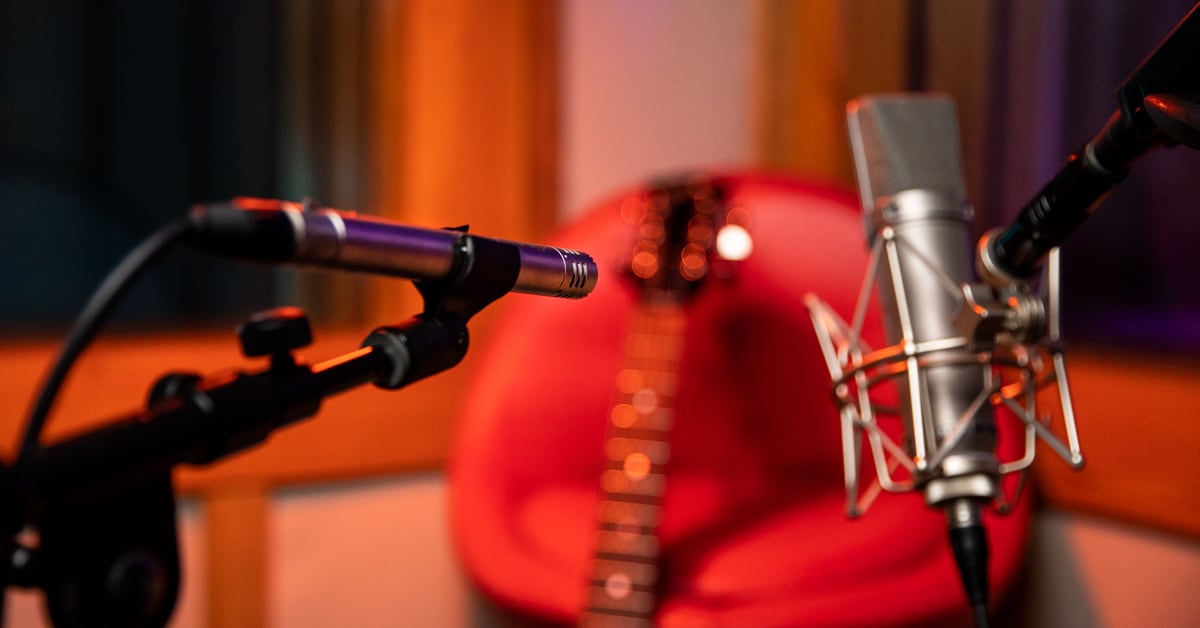Years ago, a renowned engineer/producer was recording a famous rock band, and after the instrumental tracks and vocals were laid down, he proclaimed, “Now, it’s time to add some class to this joint. We’re going to overdub an acoustic guitar part.”
Whether adding texture and dimension to a rock tune, giving voice to a singer-songwriter’s latest confessional or standing strong by itself for some stunning solo picking, acoustic guitars bring a touch of elegance, sophistication and shimmering impact to a track.
But those boxes of beauty can be absolute beasts to record well.
The player may strum aggressively or softly. They might fingerpick delicately, or pounce on the strings to punctuate melodies with snaps and pops. Many acoustic guitarists also deploy their guitars as percussion instruments, slapping the body as if it were a strange-looking conga. Sometimes, all of these techniques appear within the space of a single song. Lucky you. Then, there are the terrors of off-kilter harmonics, low-end resonances, string squeaks and fret buzzes—not to mention what a live room with hard surfaces or a dead environment with carpets can impose upon an acoustic’s sound to make your studio session a living hell.
Savvy microphone placement can sometimes mitigate dire sonics, but mic positioning alone is only part of the solution. You need the right mic for the job.
To hopefully avoid any “abundance bewilderment” from the many microphone choices available, we’ve pre-selected some popular mics for your consideration that have been proven to deliver stunning acoustic guitar tones. We’ll also touch on some recording techniques and mic-placement tactics you can try as you seek a gorgeous, musically appropriate and enchanting sound.
Table of Contents
Pre-Production Strategies for Recording Acoustic Guitars
How to Record an Acoustic Guitar
Recording Acoustic Guitars Using Condenser Mics
The Best Large-Diaphragm Condensers for Recording Acoustic Guitar
AKG C414/C214
Audio-Technica AT2020
Mojave Audio MA-200SN
Neumann U 87 Ai
The Best Small-Diaphragm Condensers for Recording Acoustic Guitar
AKG C451
Neumann KM 184
Shure SM81
Universal Audio SP-1 Matched Pair
Recording Acoustic Guitars Using Ribbon Mics
The Best Ribbon Mics for Recording Acoustic Guitar
AEA R84
Royer R-121/R-10
Sterling Audio ST170
Can You Record Great Acoustic Sounds With a Dynamic Mic?
The Best Dynamic Mics for Recording Acoustic Guitar
Shure SM57/SM58
Shure SM7B
Electro-Voice RE20
All Miked Up and Ready to Go
Pre-Production Strategies for Recording Acoustic Guitars
Choosing the best microphone to record an acoustic often requires making some pre-production decisions before you start recording. First, you should envision precisely what kind of tone you want and how it fits into the track you’re working on. Do you want to record the guitar in mono or stereo? Do you plan to overdub a bunch of acoustics for a rich, jangly texture, or do you want just one guitar to stand out with a brilliant and seductive timbre? What is the instrumentation of the track, and how do you foresee the acoustic sitting in the mix without it getting obscured by the overall band sound?
Being clear about the sound you want before you even pick up a microphone will help you with the task of selecting the mic that can deliver the right tone. And that undertaking can be a whopper. There are so many microphones available these days, and the sheer number of choices can hurl you into a circus of option anxiety. While there are only three major types of microphones to consider—condensers, ribbons and dynamics—the selections within those categories can be enormous. The good news is that you have a lot of options, which makes finding the perfect mic almost a done deal. The less-good news is that you have a lot of options available, and the possibility of getting sidetracked or driven to distraction is real.
How to Record an Acoustic Guitar
Whether you’re working in a home studio or a big commercial facility, choosing the environment to record the acoustic is key. Even professional engineers with years of experience look for the best place to achieve the necessary sound, sometimes prepping the area further with isolation materials and/or reflective surfaces. This is where your pre-production strategy pays off, as you’ll know what to do if you want a live and ambient sound, or a dead, warm and more focused source tone.
For home-recording musicians, setting up in a kitchen or hallway with hardwood or linoleum floors and nearby windows should get you that dreamy, reverberant vibe. If you want to go the other direction and capture a drier sound, try a living room with carpeted floors, plush couches and the window drapes drawn. These are basic rules, of course, so never be afraid to experiment in the bathroom, garage, basement, laundry room or wherever you get a good feeling.
With the location set, typically the next step is to decide whether you want the acoustic guitar recorded in mono or stereo. Using a single mic to capture a mono perspective avoids any problematic phasing issues (for more info, see our article "What Causes Phase Cancellation and How to Fix It"). Mono is also a good choice if you want to pan the acoustic significantly to the right or left in the mix, or if you plan to double or triple the acoustic performance for texture and wish to limit the spectral content (such as harmonics, resonances and so on).
Stereo recording with two mics is great for documenting solo acoustic performances with a kind of widescreen dimension and all the sparkle and warmth the guitar and the player can offer. Having said that, the specter of phase cancellation always appears when two or more mics are used to record a source sound, but there are ways to diminish any negative sonic gremlins—and, truth be told, some engineers and producers will utilize phase cancellation to get the tone they want. For a deeper dive on stereo and mono miking techniques, refer to "How to Record Acoustic Guitar".
So, you’ve done your pre-production pondering, selected your recording space and decided on mono or stereo miking. Now, it’s time to choose the mics. We should reinforce that all of these considerations are important, because the closer you can get to the sound you want during the recording phase, the less you’ll have to mess with and stress over the tones at the mixdown. Refinements are always a factor when instruments are evaluated against the full force of the mix, but minimizing any extensive tweaking of the acoustic guitar tone at that point is productive, encouraging and calming. In other words, try not to banish the acoustic guitar to the “fix it in the mix” job list. Okay, let’s check out those mic choices …
Recording Acoustic Guitars Using Condenser Mics
Condenser microphones are prized for their ability to capture signals with extraordinary frequency response and dynamic sensitivity. There are two types of condensers—large-diaphragm and small-diaphragm—and we’ll go over the pros and cons of the sizes, as well as our top picks for each category.
Although pro engineers often experiment with different mics for varied applications, a very basic tenet is that large-diaphragm condensers capture resonant lows and a wide frequency bandwidth, and small-diaphragm condensers are focused with a rapid response. For example, you’ll often see small-diaphragm condensers placed on hi-hat cymbals, woodwinds and, yes, acoustic guitars. Large-diaphragm condensers see a lot of use for recording drums, vocals, horns, electric guitar amps and, again, acoustic guitars. A full tutorial on both large- and small-diaphragm condenser mics can be found in our article "How Condenser Mics Work".
The condenser duo makes for an awesome team when recording acoustics, as their differences make possible some excellent miking strategies. For example, you can place a single large-diaphragm condenser a few feet in front of an acoustic to capture a mono sound with a balanced frequency range. Alternatively, you can move the mic to favor treble frequencies by positioning it closer to the guitar neck, or document more low frequencies and overall resonance by placing the mic down by the soundhole.
Stereo recordings can deliver a stellar dimensional and tonal picture when a small-diaphragm condenser is positioned near the neck and pointing towards the 12th fret and a large-diaphragm condenser is directed towards the bottom edge of the soundhole. You can also play with the angles of the mics (such as pointed dead on or positioned off-axis at 90 degrees or so), as well as the proximity to, and distance from, the source. Your pre-production plan should tell you when you nailed the sound, but keep your mind open for little surprises or “mistakes” that provide an even better tone.
The Best Large-Diaphragm Condensers for Recording Acoustic Guitar
Gotta love cutting to the chase, and these five large-diaphragm condensers are either top-selling mics and/or very popular in pro and project studios. The prices range from home studio attainable to “professional wish list,” and each has its own unique sound.
AKG C414/C214
The AKG C414 enjoys a reputation similar to the iconic Neumann U 87. It’s a very airy and open mic that caresses the shimmer, jangle and impact of acoustic guitar performances. While not as silky as a U 87, the C414’s slightly brighter nature is usually an advantage when tracking acoustics, as the sparkle is upfront and clear, yet without a hint of high-end harshness. An AKG C414 is a marvelous option for home-studio musicians seeking a versatile, high-end mic that doesn’t also have a high price tag. But even if the C414 is still a bit out of your reach, AKG offers a budget-friendly alternative, the AKG C214. The C214 offers much the same sonic character as its more luxe sibling by deleting one of the capsules present on the dual-capsule C414. From a practical sense, the single capsule means the C214 has one polar pattern—cardioid—while a C414 offers nine (including figure-8, omnidirectional and hypercardioid). The good news here is you can record acoustic guitars quite splendidly with a cardioid condenser. So, while the C214 is perhaps a less-versatile mic than the C414, it’s also a fantastic mic with tonal talents beyond its relatively inexpensive price.
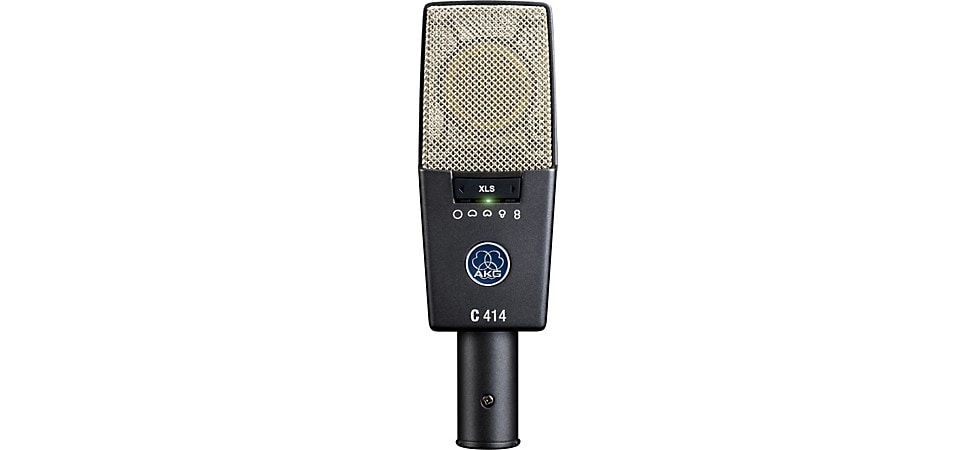
Pictured: AKG C414 XLS Reference Multi-Pattern Condenser Microphone
Audio-Technica AT2020
A super value is the Audio-Technica AT2020. The AT2020 has a clean and clear quality that’s a bit warmer than that of an AKG C214. The AT2020’s mid- and high-frequency range can be described as “gentle,” as it doesn’t present the sharp articulation and airiness of some other large-diaphragm condensers. While it’s still an excellent choice for recording any acoustic, it’s especially wonderful on guitars with a tone that may be too bright. The AT2020 can calm down the dazzle and capture a more balanced sound.
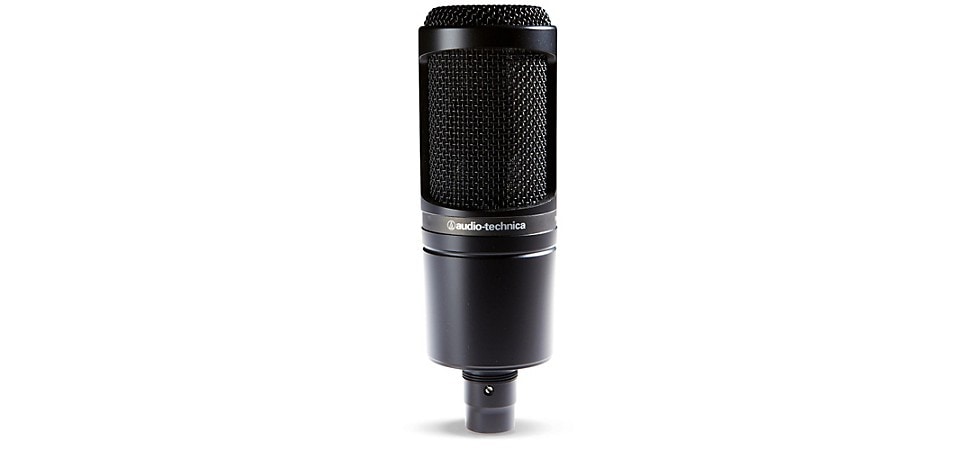
Pictured: Audio-Technica AT2020 Large-Diaphragm Condenser Microphone
Mojave Audio MA-200SN
If you want to conjure some true vintage personality, the Mojave Audio MA-200SN Tube Condenser is the real deal. Based on a design by microphone maestro David Royer, the MA-200SN deploys a military-grade JAN 5840 tube to produce warm, lavish and coherent tones reminiscent of Frank Sinatra’s fave vocal mic, the TELEFUNKEN U47 tube condenser. That analog-era tube sound is unusually gorgeous on acoustic guitars, producing taut but robust lows, silky mids and translucent highs. There’s also an indefinable “attitude” that a tube mic such as the MA-200SN imparts to a track—whether that track is an acoustic guitar, vocal, grand piano, electric guitar or bass amp, percussion instruments or saxophone. The magic is in the vibe, and it won’t appear on a frequency chart, but when you hear it, it will raise the hairs on the back of your neck.
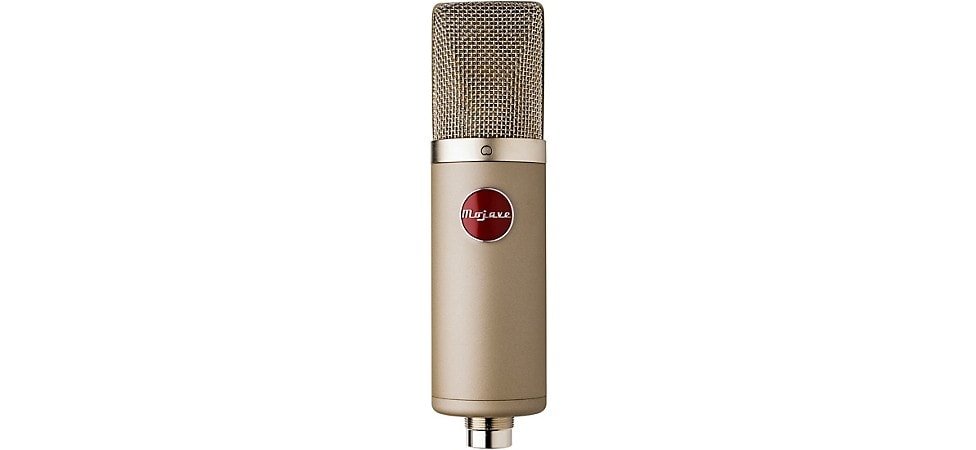
Pictured: Mojave Audio MA-200SN Tube Condenser Microphone
Neumann U 87 Ai
The Neumann U 87 Ai is one of the holy grails of studio microphones. It delivers superb sound for just about every recording application you can think of, and its smooth, transparent character is especially beneficial for capturing an acoustic guitar’s dynamic and tonal nuances. Those same qualities cause many vocalists to actually dream about singing into one. Based on its hitmaking reputation and demand, it’s near impossible to find a professional recording studio that doesn’t have a Neumann U 87 in its microphone cabinet. The mic is even a YouTube celebrity, appearing in countless videos by numerous musicians. In fact, the U 87 was a co-star in Ed Sheeran’s looping epic, “Wayfaring Stranger,” in 2011, garnering 22 million views to date. It’s an expensive choice to be sure, but try to find a U 87 owner who doesn’t believe the mic is worth every dollar.
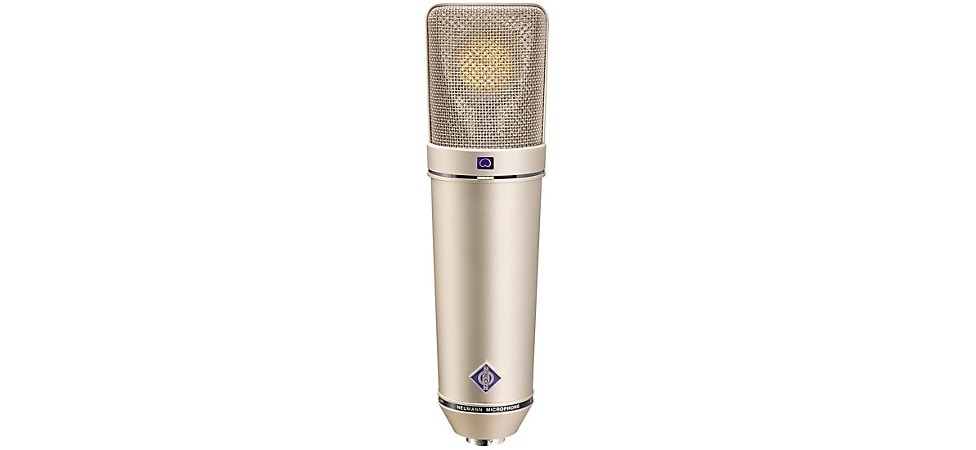
Pictured: Neumann U 87 Ai Large-Diaphragm Condenser Microphone
The Best Small-Diaphragm Condensers for Recording Acoustic Guitar
As mentioned previously, the tag team of large-diaphragm and small-diaphragm condenser mics was practically made-to-order for recording acoustic guitars. Let the big condenser deal with the beef and jangle, and leave the shimmer and air to the small mic—it’s a winning combination. Here are four top-selling small-diaphragm condensers to check out …
AKG C451
The AKG C451 is omnipresent in professional recording facilities, and yet, pricewise, it’s still a readily attainable mic for home and project studios. Due to its clarity, fast response and smooth high end, the C451 is often a go-to mic for hi-hat cymbals, drum overheads, the treble strings of pianos and the “fretboard” position on acoustic guitars. In fact, you can use the C415 partnered with a large-diaphragm condenser, or let it rock all by its lonesome self. Either way, when you position a C415 about a foot or so away from the neck and angled toward the 12th fret on the fretboard, the result is pure poetry.

Pictured: AKG C451 B Reference Small-Diaphragm Condenser Microphone
Neumann KM 184
While the AKG C451 produces a tight and open shimmer, the Neumann KM 184 delivers a slightly more balanced perspective of an acoustic’s lows, mids and highs. Both mics are total bosses, but the KM 184 might work best for a guitar that already produces a tone you love, while the C451 may be the pick for an acoustic that’s somewhat lacking in high-end content.
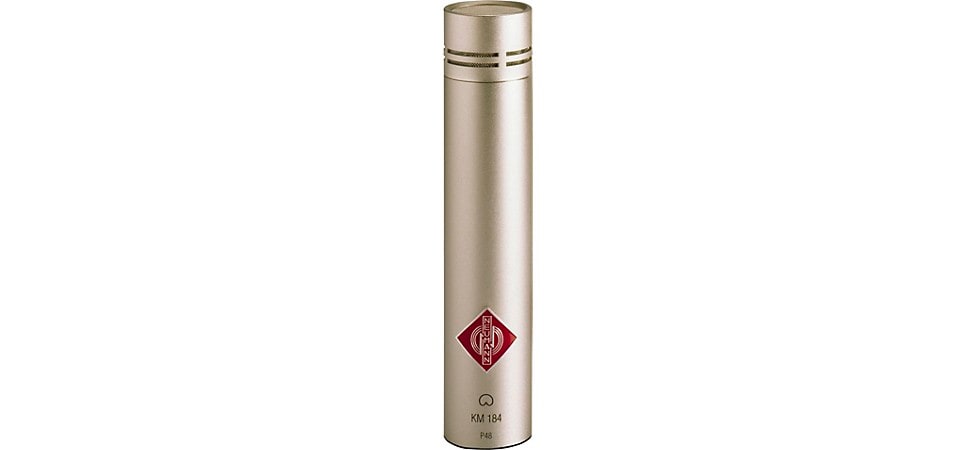
Pictured: Neumann KM 184 Small Diaphragm Condenser Microphone
Shure SM81
While some recording musicians prefer a small-diaphragm condenser that adds some brightness to their acoustic sounds, others go for a more natural tone. This is what the Shure SM81 excels at. The mic’s relatively flat frequency response offers a transparency that typically captures the organic sound of the acoustic guitar in the room. Pro tip: At first listen, the SM81’s accurate rendering of the acoustic may not appear as sonically thrilling as the tone captured by some other small-diaphragm condensers, but don’t immediately reach for your EQ knobs to brighten things up. At the mix stage, the more organic sound may be exactly what works best for the track. Patience.

Pictured: Shure SM81 Cardioid Condenser Microphone
Universal Audio SP-1 Matched Pair
Home-recording musicians looking for a mic deal that delivers excellent sonic quality should check out the Universal Audio SP-1 Matched Pair. For a budget-friendly price, you get two small-diaphragm condensers—as well as two mic-stand mounts, a T-bar for mounting both mics and two windscreens—that you can use for stereo miking acoustic guitars, pianos, drum overheads and more. Like the Shure SM81, the SP-1s produce an organic-leaning sound with sweet mids and highs and a controlled low end. In addition to the mic bounty and affordable price, Universal Audio includes an added bonus for those using the company’s Apollo audio interfaces—custom Apollo SP-1 presets with EQ settings matched to the mics and the recording application.
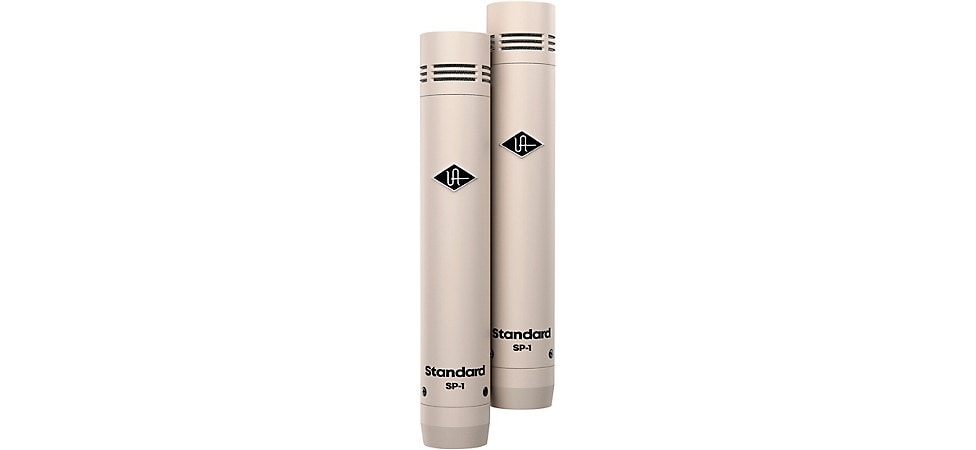
Pictured: Universal Audio SP-1 Standard Pencil Microphone (Matched Pair)
Recording Acoustic Guitars Using Ribbon Mics
There was a time when a ribbon mic wouldn’t have been the best choice for recording a churning acoustic performance punctuated with string slaps and guitar-body percussion. Ribbon mics actually use a corrugated foil strip to capture sound, and some vintage models were so fragile that a strong wind—or an ill-timed plosive from a vocalist—could shred the ribbon. Happily, that’s not the case anymore, and modern ribbons can even stand up to a drum kit or a Marshall amp at full roar. For a more comprehensive study on ribbon mics, please read "How Ribbon Microphones Work".
For recording acoustic guitars, ribbon microphones can produce a beautifully natural sound that showcases the inherent tone of the guitar. Ribbons are naturally bi-directional (the figure-8 polar pattern hears sound from the front and back while rejecting signals from the sides), and they also have a significant proximity effect (bass signals are more prominent the closer the mic gets to the source sound). These characteristics allow for some savvy miking techniques. For example, if the tone of your acoustic guitar is a bit thin, moving a ribbon mic nearer to the body and fretboard can beef up the sound quite nicely. In addition, the figure-8 pattern can capture a focused sound from the front of the mic and some expansive room ambience from the back. While a single ribbon mic won’t give you true stereo, if you experiment with placement, you can get a near-cinematic mono sound that melds the organic impact of the acoustic guitar with the natural ambience of the recording space. As the sound of one ribbon mic is usually pretty magnificent, you wouldn’t be blamed if you never recorded an acoustic guitar in stereo ever again.
The Best Ribbon Mics for Recording Acoustic Guitar
AEA R84
An evolution of the celebrated vintage RCA 44 ribbon, the AEA R84 delivers lovely mids, airy highs and a blossoming yet not muddy low end. It’s a warm and inviting sound with enough sparkle to animate single-note melodies, fingerpicked chords and boisterous strumming.
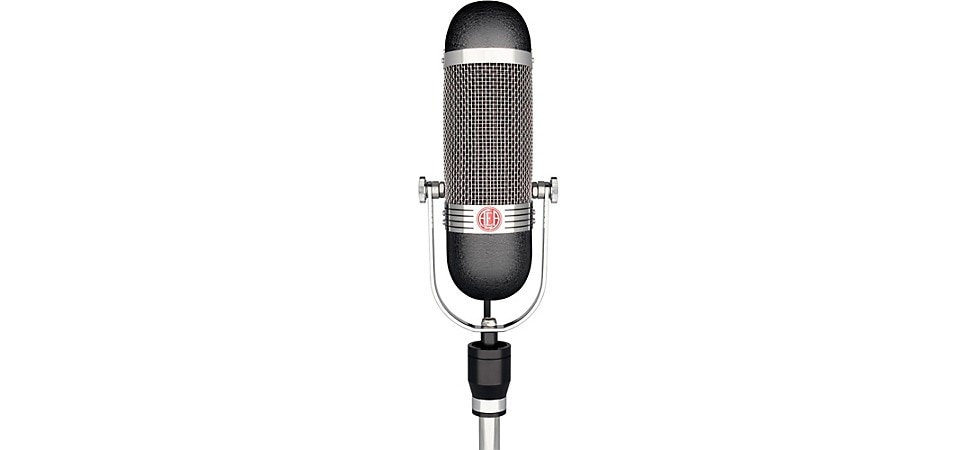
Pictured: AEA R84 Bidirectional Big Ribbon Studio Microphone
Royer R-121/R-10
Arguably one of the mics that kicked off the ribbon resurgence in the late 1990s, the Royer R-121 is simply a stunner of a mic. The natural presence it draws from a good acoustic guitar is inspiring—the mids and highs seems to float right in front of your ears, and the bass is lush, powerful and thick. While the sound is definitely organic—no frequency appears overly hyped up—it’s natural in a cinematic, Dolby Atmos kind of way. However, mic placement is key, as the low end can be too much of a good thing if the R-121 is positioned too close to the soundhole or near the bottom of the guitar body. You can get a Royer ribbon for less by picking up a Royer R-10. When tracking acoustic guitar parts, the R-10 may offer up ever-so-slightly less bass than the R-121, and the R-121’s midrange frequencies may be a tad sweeter, but it is really difficult to hear a significant difference between the two mics—even in Royer’s own comparison video between the R-121 and R-10 on YouTube.

Pictured: Royer R-121 Ribbon Microphone
Sterling Audio ST170
On the budget end of the spectrum, the Sterling Audio ST170 is quite the deal, and it should encourage more home-recording musicians to dive into ribbon mics. Remarkably, the sound of the ST170 is comparable to much more expensive ribbons. On acoustic guitars, you get that natural and present midrange. It’s clear and articulate without being gritty, and the high end has a pleasant sheen. Bass frequencies are somewhat restrained—which is good if your acoustic is a boomer—but hefty enough to sound full for strumming and fingerpicking.
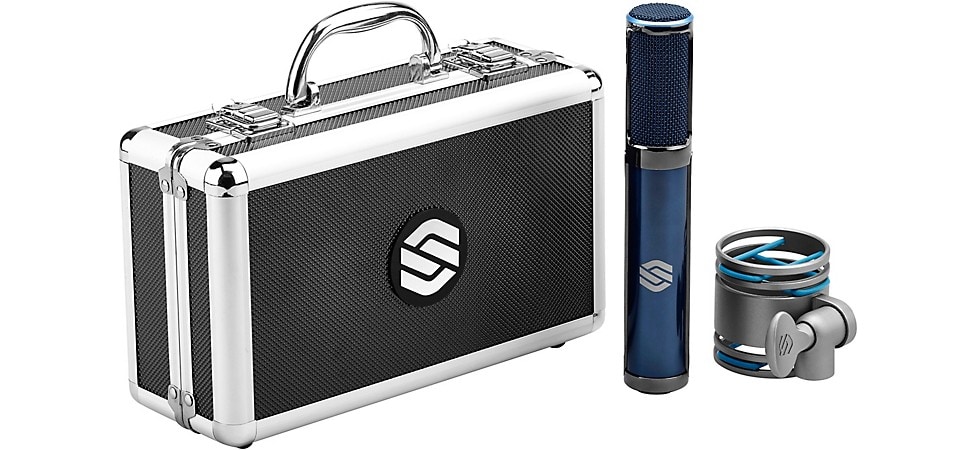
Pictured: Sterling Aduio ST170 Active Ribbon Microphone
Can You Record Great Acoustic Sounds With a Dynamic Mic?
Listen. Someone is always going to say that you can’t do something—like record good acoustic guitar tones with a dynamic microphone, such as the battered Shure SM57s and SM58s you find as part of a local bar’s PA system. Don’t pay any attention. While condenser and ribbon mics are typically preferred for recording acoustic guitars because of their sensitivity and relative transparency, you can be sure the acoustic sound on some song you love—whether it’s from the 1960s or released last week—was captured with a dynamic mic.
Here’s why. If a very last-minute acoustic guitar overdub was requested on a song, the engineer may have grabbed whatever mic was nearby to get the job done quickly, and that mic may have been a dynamic. It happens. In addition, an artist or producer might want a more abrasive midrange to blend in with a textural wash of acoustic guitars. He or she might choose to record the next couple of acoustic guitar overdubs with a dynamic mic to add tonal variety to a foundation of acoustics tracked with condensers and/or ribbon mics. Furthermore, an artist may prefer the edgier sound of an acoustic guitar recorded with a dynamic mic because that tone best matches the emotional impact of their song. And, sometimes, your creative muse doesn’t want you to do whatever is “typical,” so it screams at you to do something dumb or irrational or shocking. That’s what creativity is all about, so tell those “someones” to shut up and see if these dynamic mics are just the thing for your acoustic tracks.
The Best Dynamic Mics for Recording Acoustic Guitar
Shure SM57/Shure SM58
We mentioned the Shure SM57 and SM58—and they aren’t crazy choices because those mics can handle just about anything. And, trust us, if you surprise a club soundperson at the last minute of your sound check by pulling out an acoustic guitar without an onboard pickup, he or she will likely sit you down and mic you up with an SM57. (Just saying … )
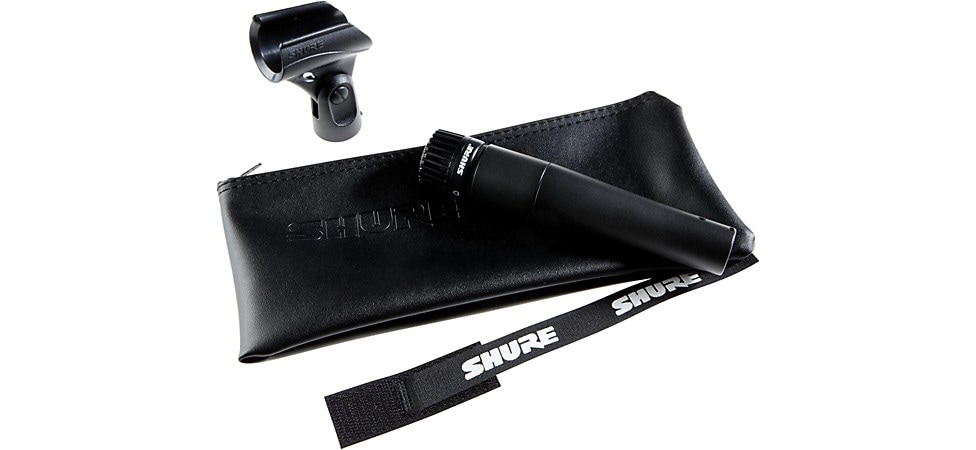
Pictured: Shure SM57 Dynamic Microphone
Shure SM7B
If you want to mic an acoustic with a Shure SM57 in the studio, you may notice a midrange-heavy tone with diminished, but still very audible, lows. It’s a focused and narrow tone, but it’s hardly an unacceptable one. You can get an extended frequency response and a little more low end if you swap the SM57 for a Shure SM7B. Intended by Shure as a mic with more universal applications, it’s been proven to be one by the many YouTube videos featuring an SM7B recording various acoustic guitars. The SM7B gained a sibling this year with the introduction of the Shure SM7dB, which adds a switchable +18dB or +28dB preamp to its feature set.
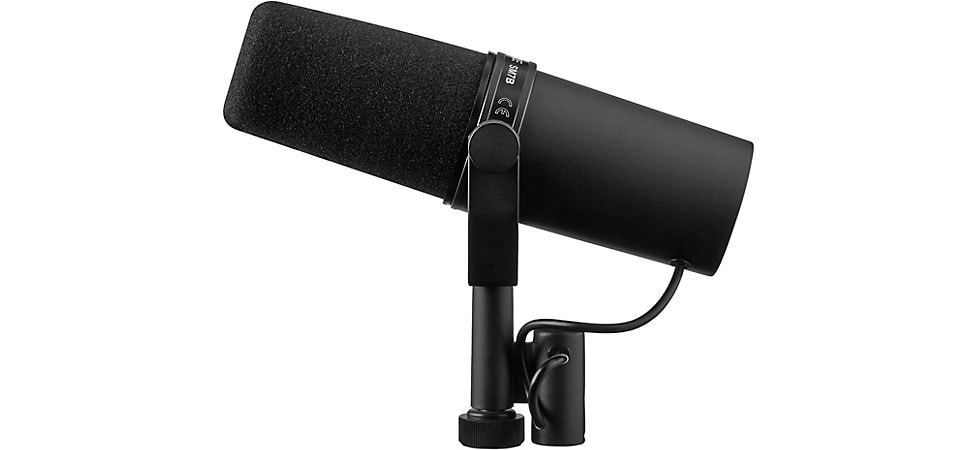
Pictured: Shure SM7B Cardioid Dynamic Microphone
Electro-Voice RE20
The Electro-Voice RE20 has become one of the classic radio and podcast mics—much like the Shure SM7B, as well—but it can also capture acoustic guitar tones with a clear and articulate midrange, warm lows and restrained, but still sparkling, highs.
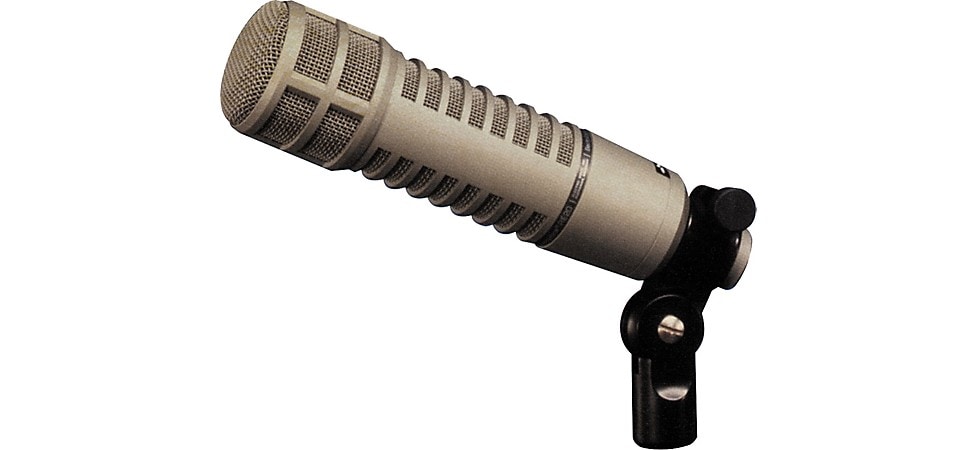
Pictured: Electro-Voice RE20 Dynamic Cardioid Microphone
For more data on dynamics, see our article, "How Dynamic Mics Work".
All Miked Up and Ready to Go
Hopefully, we’ve demystified the task of selecting the best microphones to record acoustic guitars. But if you want to clarify a few recording techniques or discuss your mic choices with a knowledgeable pro, please contact one of our Gear Advisers at your local Guitar Center store or at our call center. They’ll provide person-to-person counsel about mics and studio applications. Remarkable acoustic guitar tracks are in your immediate future.







